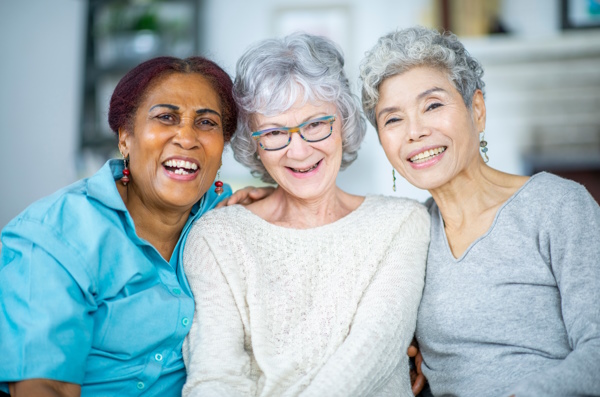Women and Girls
For a long time, it was thought that ADHD was primarily a condition in boys and some men. Research and lived experience have shown this is inaccurate, however. While women still receive fewer diagnoses for ADHD, the gap between women and men in overall prevalence has narrowed in recent years. This means prevalence of ADHD in women is almost the same as the prevalence in men.

Girls are diagnosed with ADHD at just under half the rate at which boys are diagnosed. This difference in diagnosis rate is made up for in adulthood, where women and men are diagnosed with ADHD at roughly the same rate. The current ADHD prevalence for all adults is 4.4 percent.
Diagnosis of ADHD in girls and women
ADHD symptoms continue to be overlooked in young girls and teens, even when they are struggling. Most experts conclude this is because girls more often exhibit the predominantly inattentive presentation of ADHD, while parents and professionals expect to see the predominantly hyperactive-impulsive presentation more often seen in boys. Previously, it was assumed by some medical professionals that ADHD was a condition mainly found in boys, and they did not evaluate girls without the hyperactive-impulsive presentation for the disorder.
Women experiencing ADHD symptoms may seek a mental health evaluation when they find themselves struggling with daily life. Since other mental health conditions, such as depression and anxiety, frequently co-occur with ADHD, a woman may be diagnosed with one of these conditions before the underlying ADHD is identified.
Often a woman requests an evaluation for ADHD after one of her children receives the diagnosis. Recognizing the same experiences and symptoms in herself as in her child, she will specifically request an evaluation for adult ADHD, rather than a health professional suggesting it be done.
Treating ADHD
 Not every person who has ADHD will seek formal treatment. Some women decide on a formal treatment plan when they feel some part—or even all—of their lives are out of control. It’s not uncommon for them to have personal finances unmanaged and paperwork and record-keeping done poorly or not at all. At work, these women struggle unsuccessfully to keep up with the demands of their jobs. At home, they may feel even less able to keep up with the daily tasks of meals, laundry, and life or family management.
Not every person who has ADHD will seek formal treatment. Some women decide on a formal treatment plan when they feel some part—or even all—of their lives are out of control. It’s not uncommon for them to have personal finances unmanaged and paperwork and record-keeping done poorly or not at all. At work, these women struggle unsuccessfully to keep up with the demands of their jobs. At home, they may feel even less able to keep up with the daily tasks of meals, laundry, and life or family management.
Other women are more successful in hiding ADHD symptoms, while struggling to keep up with increasingly difficult demands by working into the night or spending their free time trying to get organized. Whether a woman's life is clearly in disarray, or she is able to hide her struggles, she often describes herself as feeling overwhelmed and exhausted.
When a woman opts for formal treatment, she and her clinician will consider the benefits of medication management, behavioral and lifestyle management, other therapy approaches, and lifestyle supports, such as coaching or working with a professional organizer. Learn more about treatment approaches in Treatment of ADHD in Adults.
Co-occurring conditions with ADHD
ADHD research specifically focused on women and girls has made great strides forward in the last generation, with researchers considering how coexisting conditions affect girls and women and developing treatment approaches that better meet their needs.
 While there are many types of co-occurring conditions, researchers and clinicians tend to focus on several that more frequently affect women and girls. Disordered eating and diagnosed eating disorders, alcohol and substance abuse, sleep difficulties, self-harm, mood disorders, and tic disorders can all co-occur with ADHD in girls and women. Additionally, fibromyalgia, chronic fatigue syndrome, and body dysmorphic disorder (an incorrect self-view of one’s body) have been noted as co-occurring conditions. Most women who have ADHD report having a poorer self-image or lower self-esteem than their peers.
While there are many types of co-occurring conditions, researchers and clinicians tend to focus on several that more frequently affect women and girls. Disordered eating and diagnosed eating disorders, alcohol and substance abuse, sleep difficulties, self-harm, mood disorders, and tic disorders can all co-occur with ADHD in girls and women. Additionally, fibromyalgia, chronic fatigue syndrome, and body dysmorphic disorder (an incorrect self-view of one’s body) have been noted as co-occurring conditions. Most women who have ADHD report having a poorer self-image or lower self-esteem than their peers.
As mentioned earlier, depression and anxiety are often the most visible coexisting conditions experienced by women who have ADHD. Both conditions can be present as separate disorders or as the result of struggling with undiagnosed or poorly treated ADHD for a very long time. The two conditions frequently prompt women to seek medical and mental health care and can lead to a diagnosis of ADHD.
When treating a woman or girl who has ADHD and a co-occurring condition, the clinician or treatment specialist needs to address the condition causing the most difficulty at that moment, especially conditions that can be life-threatening if untreated. However, many ADHD experts recommend treating both ADHD and the co-occurring condition together, because better management of ADHD symptoms can improve the treatment effectiveness for the co-occurring condition. Learn more about co-occurring conditions in Coexisting Conditions.

Continue reading about women and girls with ADHD:
- Symptoms of ADHD in Women and Girls
- Treatment for ADHD in Women and Girls
- Lifestyle Supports for Women with ADHD
